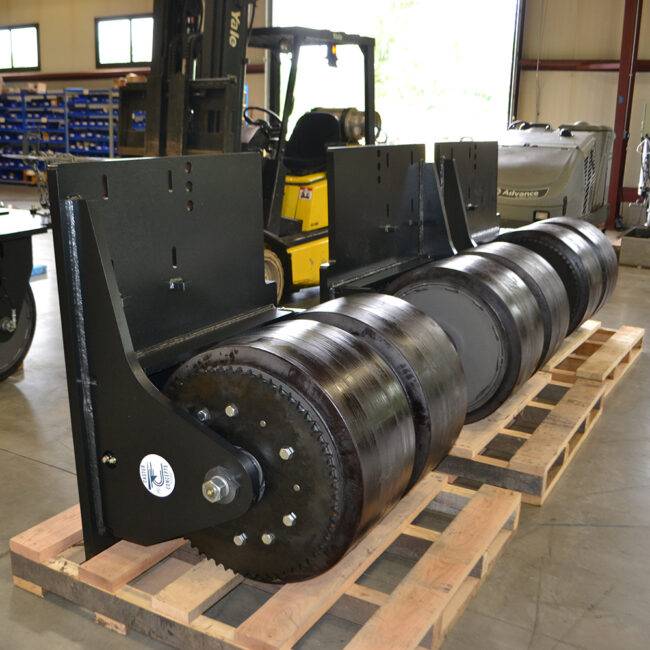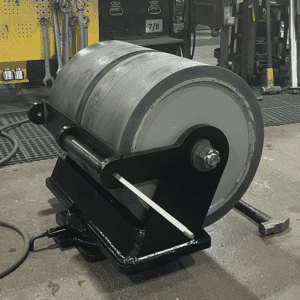

Caster Concepts prides itself on selling heavy duty casters, and when we are discussing loads that weigh tons, here is how we determine what capacity caster you should use. Although there are different weight classifications, our high-capacity casters are designed to handle loads of 17,000 pounds up to 50,000 lbs.
When you come to us needing casters that can handle 50,000 lbs., we determine the weight each caster must handle by dividing the total weight by three. Three points make a plane, which can be explained as three non-linear points on the same line. And most planes are seen as a triangle. When looking at casters positioned in a square, there are typically three casters touching the ground at any given time, so you must account for this and ensure that three casters can handle the total load.
RELATED: Why Is The Listed Weight Capacity Different Than What You’re Telling Me?
 Capacity is one of the three elements of determining a caster, but a very important one. A caster will fail if you use a polyurethane wheel and put more weight on it than it is rated for. This usually results in the internal stress that the caster is experiencing will cause small tears. And with continual use, these tears no longer help disperse the load and overstress the surrounding poly.
Capacity is one of the three elements of determining a caster, but a very important one. A caster will fail if you use a polyurethane wheel and put more weight on it than it is rated for. This usually results in the internal stress that the caster is experiencing will cause small tears. And with continual use, these tears no longer help disperse the load and overstress the surrounding poly.
Caster Concepts won’t sell you a caster based on capacity alone, and we do ensure that the caster chosen is designed for the weight you want to move. But we also consider other key factors required to determine a caster for the application properly.
Speed and duty cycle are the other two elements of determining the proper caster. Based on asking these questions, we can work with them to determine the appropriate caster for their application.
Speed helps us determine how fast the casters will move and is important in deciding the right caster for the job. If the speed exceeds walking speeds, we will use that information to determine if a poly wheel being considered will build up too much heat. If the material becomes too hot, it can melt, so we may need to use a different material.
In general, the heavier the desired caster load capacity, the harder the wheel material will be. But harder wheels have a higher potential to damage your floors. Softer treads are more resilient and offer the most floor protection. These types of casters and wheels can also reduce the accumulation of small obstructions like metal shavings, but the tradeoff is that they may be too light-duty for more rugged applications.
Next, knowing the duty cycle tells us how often the caster will be moving. How far and often the casters will be moved is crucial in determining the correct caster and load rating. This also factors into heat buildup because the longer a tire is used, the more heat builds up, and the chances of failure increase.
Some additional questions we might ask include flooring conditions because if the factory floor is not in the best shape, it could determine a change in wheel or caster specifications.
Another thing that we will need to discuss to determine the load rating is the environment where the casters will be used. Is it a hot, humid environment? Are they used outdoors, or will they come into contact with any chemicals? These factors are also part of determining the proper caster when determining the load rating. Specing casters is a fine art; it will ensure a long caster life when done properly.
In summary, determining the correct caster for heavy duty applications is very similar to determining the capacity of any caster. But casters that need to be rated at capacities of 25 tons have additional considerations to ensure the caster can effectively do its job.
RELATED: 5 Tips In Choosing The Right Caster Wheel For Your Material Handling Application